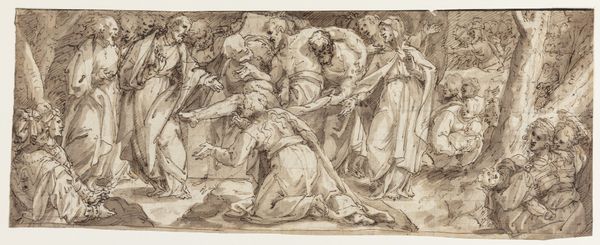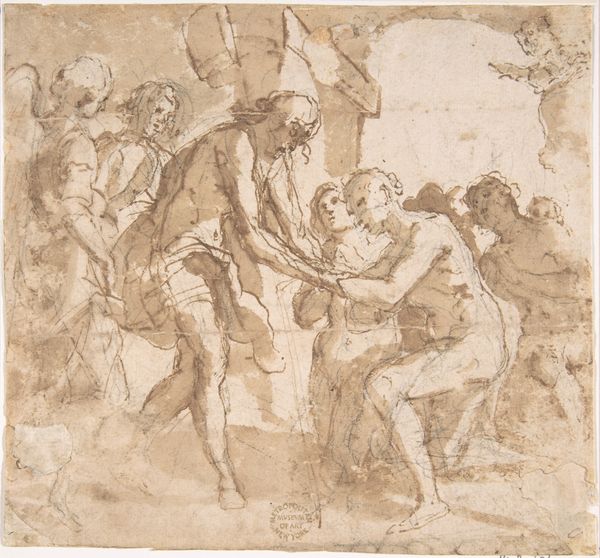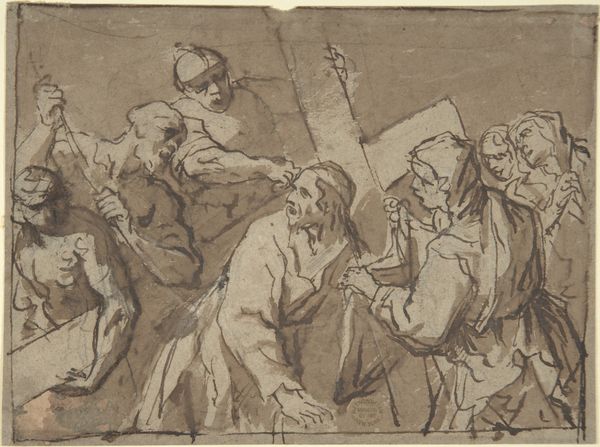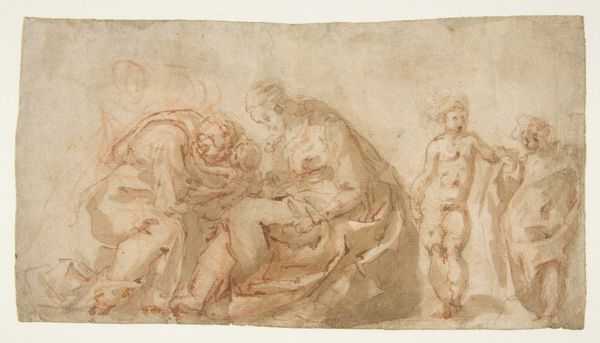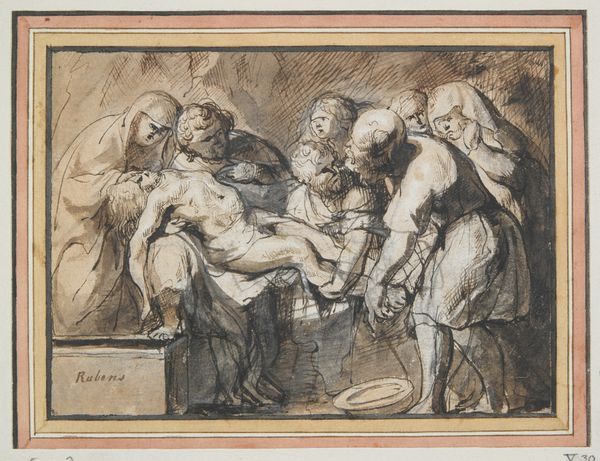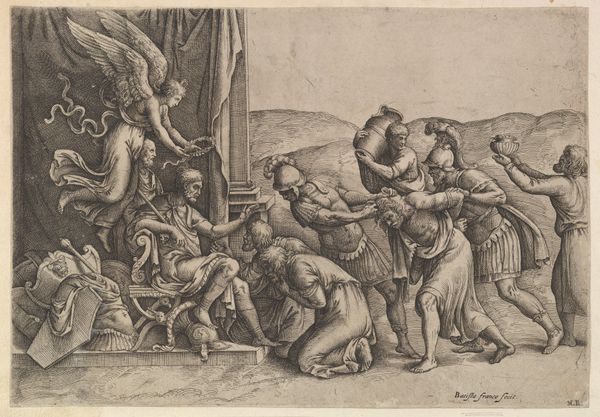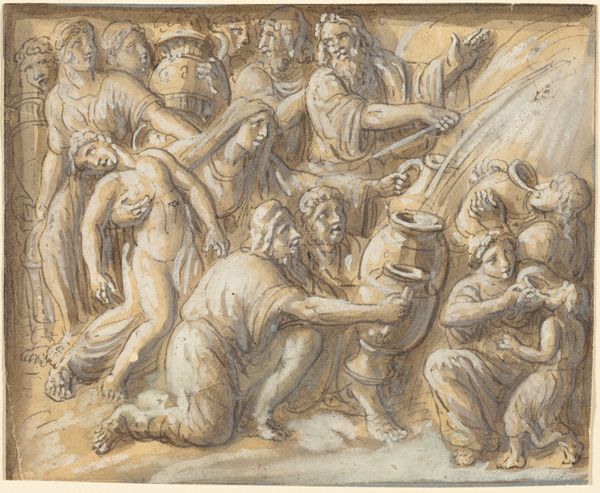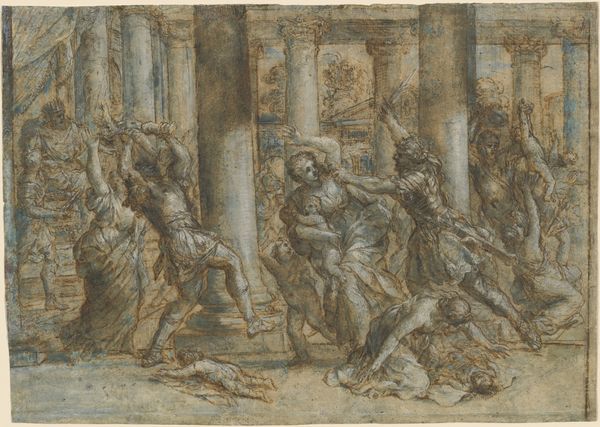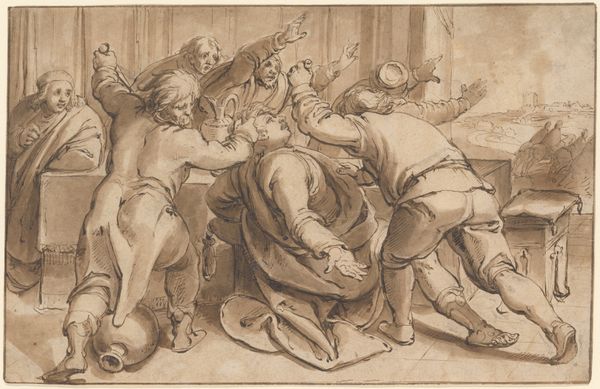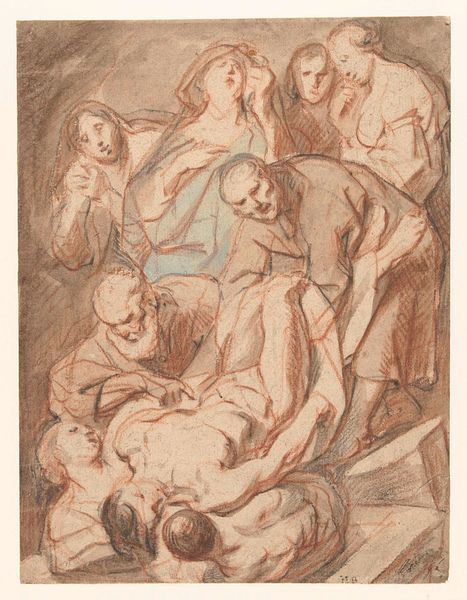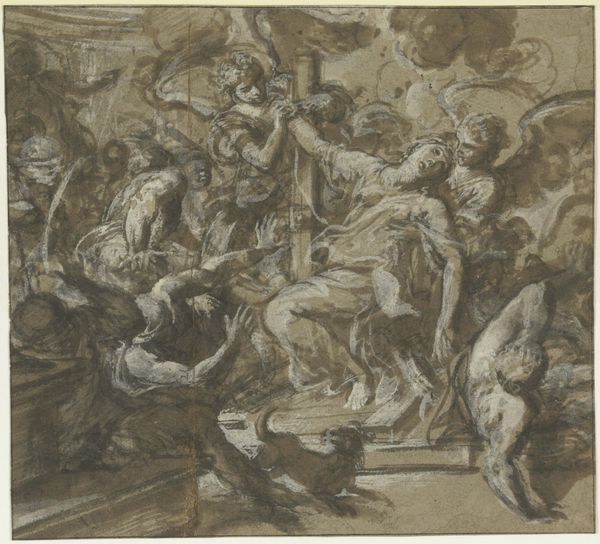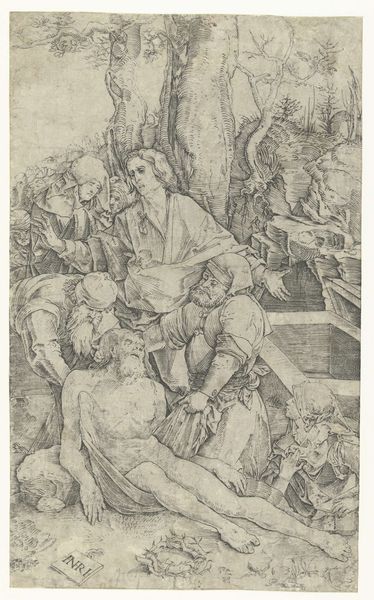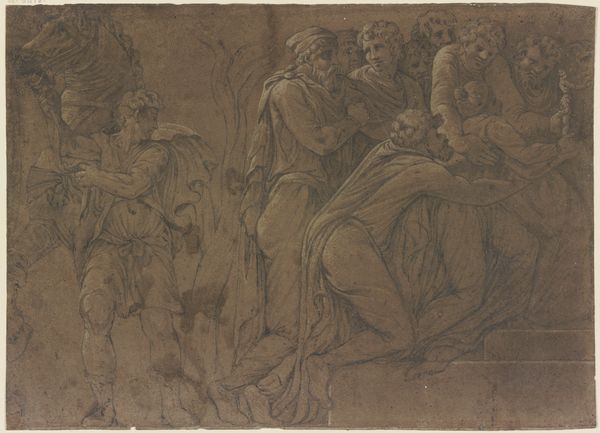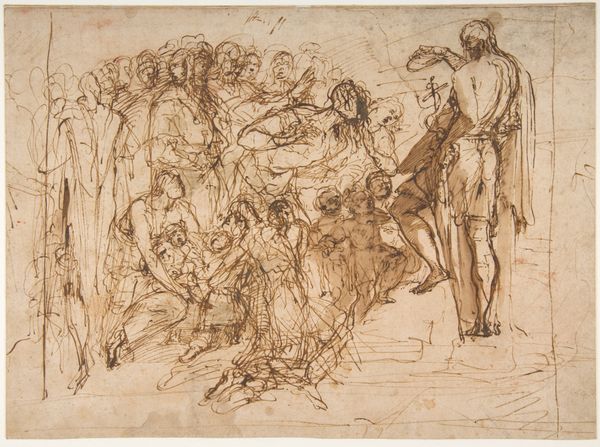
drawing, ink
#
drawing
#
ink painting
#
charcoal drawing
#
mannerism
#
figuration
#
11_renaissance
#
ink
#
history-painting
#
watercolor
Dimensions: 269 mm (height) x 414 mm (width) (bladmaal)
Curator: Here we have "The Entombment" by Paolo Farinati, believed to have been created sometime between 1524 and 1606. Editor: Gosh, what a wash of sorrow. Look at that tonal range in brown ink – like a sepia-toned memory trying to surface. The way they are maneuvering the body seems so vulnerable and raw. Curator: Indeed. Note the use of chiaroscuro to heighten the emotional impact. The stark contrasts emphasize the figures' grief as they lower the body, presumably of Christ, into the tomb. Consider also the formal elements: the dynamic arrangement of figures, typical of Mannerism. See how their elongated limbs create a sense of unrest and spiritual turmoil. Editor: Spiritual turmoil – yes! That's what it feels like. I love how the artist used a few quick strokes to give so much weight and tension. The body practically falls into our own space. It's like they want us to witness this, not just observe. Does it always need so many guys? The tomb seems easy to reach to me. Curator: One might analyze this artistic decision structurally; Farinati used this specific distribution of figures to convey weight and create emotional contrast, playing with spatial relationships for emphasis and theatricality characteristic of Mannerist aesthetics. The repetition creates depth and evokes grief, but to your question of manpower... Editor: Oh, no, that's just me being… me. Is it wrong I wanna see her perspectives? The gals way back by the tomb. What’s that gal holding by the way, in the top-left corner? Curator: Certainly not wrong. In this context, they serve both as compositional elements and representations of female lament, archetypal witnesses to profound loss, providing a crucial emotional and narrative counterpoint. Zooming into that very top left hand corner, the drawing suggests that the one woman, or Virgin Mary, appears to cradle a baby, though the quality is difficult to appreciate on first glimpse. Editor: Right. So much going on! I leave here today a little less sure what I saw than when I got here. Curator: And isn't that precisely what makes engaging with art so endlessly enriching? It perpetually questions our perspectives and enhances our understanding of the human condition.
Comments
No comments
Be the first to comment and join the conversation on the ultimate creative platform.
